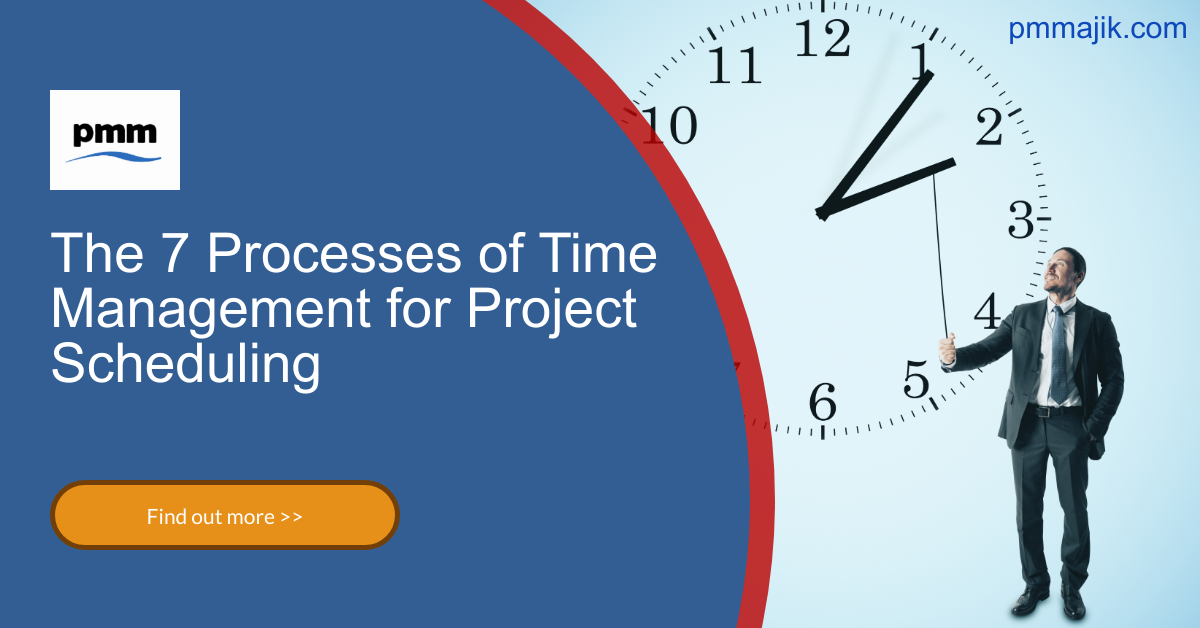During the project planning phase, the project management office (PMO) needs to support the project manager in creating a schedule. This needs to be done through the framework of the seven processes of time management for project scheduling.
The project schedule plays a vital role during the completion of the project and will be a benchmark to measure project performance against. It will help your PMO know whether the project is slipping off track or exceeding expectations and decide if resources need reallocating.
The project schedule is rarely created by a PMO, but the office is there to set the process framework and provide data when needed. With that, we’re going to look at:
- Each step of the seven processes of time management
- The actions that need to be taken
- How a PMO can support the time management principles
The 7 processes of time management
1. Create a project plan
As we’ve looked at previously, the project plan is a different document to a project schedule. They get used interchangeably, but a plan confirms what’s needs to be done and how it’ll get done while the schedule is about when tasks are completed.
The project plan requires a list of deliverables, risks, resources required, among other information. A PMO can provide previous project plans to help with the process and create frameworks for assessing project risks.
2. Define project activities
This step goes deeper than the project plan by detailing the work that needs to be done to realise the project plan. It needs to break down work into manageable chunks that can fit within the project methodology, such as work to be completed in a Scrum sprint.
Your PMO can once again help with data and sample project activity lists for the project manager (PM) to check against. You can also have an analyst or a subject matter expert (SME) confirm the activities list is realistic and comprehensive.
3. Sequence project activities
Now everything that needs to be done is outlined; it’s time for them to be put into a logical order. It’s essential the PM maps out the task dependencies, i.e. understands which elements need to be completed before other tasks can start.
Know what can get started first and which activities can run concurrently – if needed – will ensure the final schedule is realistic. Again, the expertise within a PMO can help the manager doing the planning to understand the sequence of tasks.
4. Estimate resources
The picture of how the project will look is getting complete, and this stage plugs in what is needed to get a project done. Resources to consider here are:
- People
- Hardware
- Software tools and packages
- Office space
- Machinery and vehicles
This information will ensure that during the scheduling phase, everything can be booked or ordered in time to keep timelines on track.
Previous project data will again be useful for your PMO to provide. Having a list of available resources and a process map for working through this stage is another way your PMO can support this step.
5. Estimate durations
Knowing how long each task should take is vital to planning out an accurate schedule. If there isn’t accurate information from previous projects, the PM will need to look at the best, worst, and expected timeframes for a task and create an average.
Your PMO can offer guidance with previous data and support any estimates the PM needs to make by sourcing industry standards where possible.
6. Develop schedule
Now that all the required information is at hand, it’s time to plug the data into a coherent schedule. For large projects, this can take a lot of planning and cross-referencing but the time investment is worth it to have a schedule that’s realistic and challenging at the same time.
Your PMO should have an outline of a project schedule on hand to give to PMs. This document needs to be available to everyone working on the project, and a slimmed-down version is also made available to stakeholders.
7. Control project schedule
Once the project is running in alignment with the schedule that’s been created and signed off, you need to monitor and manage it. Primarily, it’s the role of the project manager to keep on top of the project schedule, but your PMO should monitor and report on it as standard, too.
If anomalies are detected, your PMO can decide to offer extra help to keep the project on schedule or assess the reasons for overperformance to ensure more accurate schedules next time.
Why use the 7 processes of time management
Using the seven processes of time management for project scheduling each time will give you a repeatable process and make sure that each project is monitored and managed the same way.






